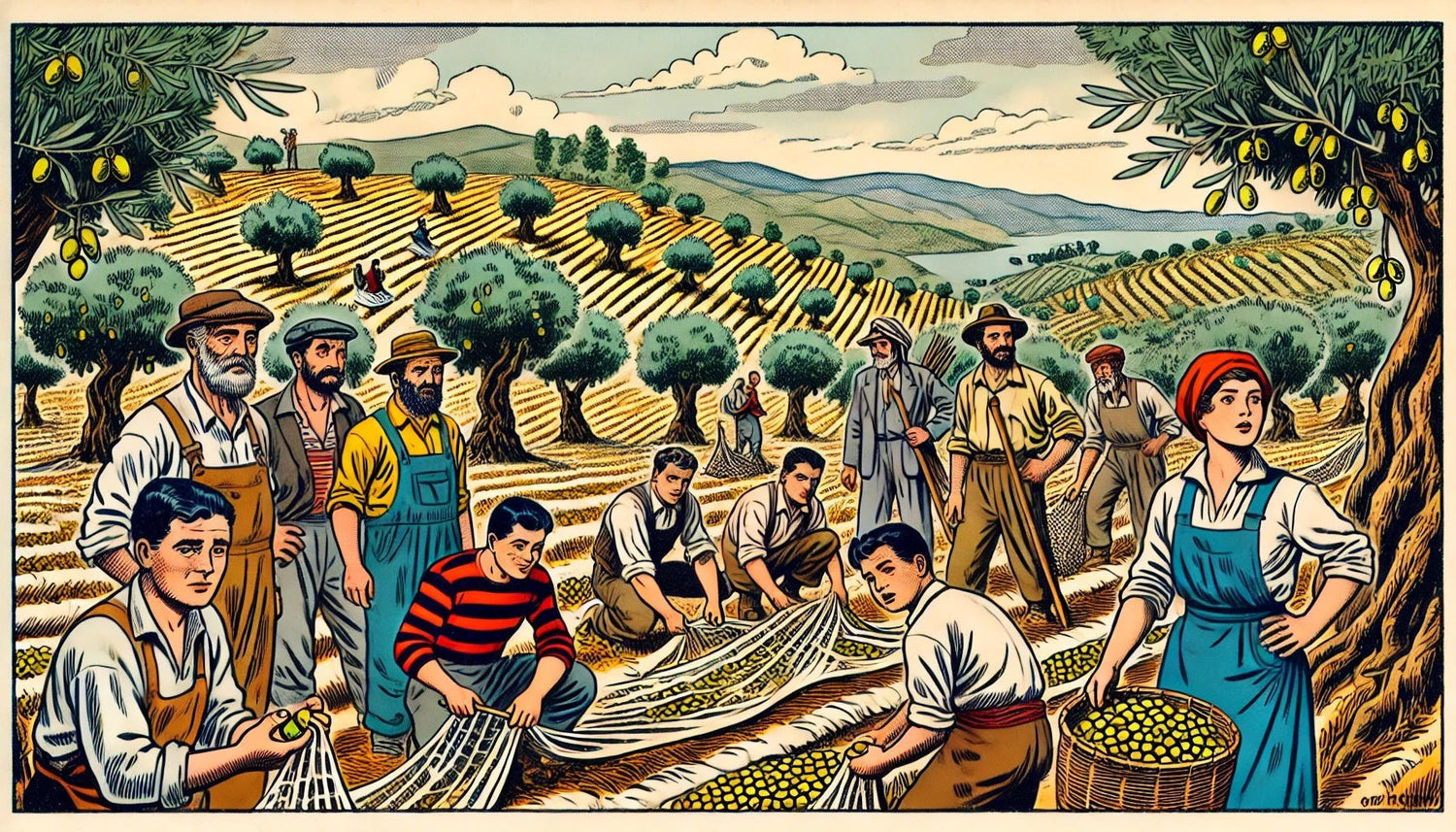The future of olive oil prices: What awaits us in 2025 ?
In recent years, the global olive oil market has experienced significant price increases, due to an interplay of environmental, economic, and market dynamics.
The most important influencing factors include prolonged droughts, particularly in southern Europe, which have severely impacted harvests in leading producing countries such as Spain and Greece. At the same time, global demand for olive oil has increased, as have energy, labor, and transportation costs. Here, we discuss current developments, the role of major producers, and expert forecasts for olive oil prices in 2025.
Current overview of the olive oil market
Over the past two years, olive oil prices have risen to record highs due to several intersecting factors. Drought conditions in Southern Europe, particularly in Spain—the world's largest producer—led to significant yield losses. This led to a sharp decline in supply, coupled with rising global demand. At the same time, production costs (energy, wages, transportation) also rose.
The result: prices shot up like never before.
Spain's role in global olive oil production
Spain remains the leading producer of olive oil and contributes significantly to supplying the global market. However, 2022 and 2023 were marked by severe droughts that drastically reduced crop yields.
Initially, positive signs were evident for the current 2024/2025 season: favorable rains in spring 2024 strengthened the olive trees and led to better growing conditions. Forecasts for the olive harvest in Spain indicated a recovery in production in September, with an expected increase of around 50% compared to the previous (very poor) season.
Now, however, the cards have been reshuffled again: It is not yet entirely clear how much the severe floods at the end of October, which left an unimaginable amount of destruction, will affect the olive harvest.
As with all agricultural products, weather conditions are crucial, and a good forecast can quickly become obsolete due to an extreme weather event such as drought or flooding.
Expected harvests and production estimates
In the EU-wide context, total production is expected to reach 2 million tonnes, representing an increase of 9% compared to the five-year average. These increases could ease pressure on prices and provide financial relief for consumers. However, global demand, particularly from Asia, remains a challenge, limiting the possibility of a rapid price reduction.
Regional production fluctuations: The influence of rain on Greece's harvest
Greece, also a leading olive oil producer, has experienced equally extreme weather conditions in recent years, severely impacting harvests. The summer of 2024 was characterized by unusually hot and dry conditions, with a prolonged period of temperatures between 40°C and 45°C severely stressing olive trees. After more than four months of unusually hot and dry weather, it became clear that rain was crucial for a bountiful 2024/2025 harvest.
"The drought has hit olive cultivation throughout the Mediterranean," explained Yiorgos Kokkinos, president of the Nileas Producers' Association in the Messinia region . The olive trees urgently need rain before harvest to ensure a strong harvest. But rain failed to materialize throughout October, and in many places the olives dried out on the trees before they were ripe.
If the rain continues to fail, Greece could also have a significantly worse harvest than expected.
Nevertheless, there is hope: experts estimated in early autumn that total production in Greece could reach 250,000 to 280,000 tons under favorable conditions – almost twice as much as the previous year.
So perhaps, even though many regions are affected by a lack of rain, a fairly good harvest can still be expected.
Forecasted olive oil prices for 2025
All this clearly shows how difficult price predictions are, as everything can change at the last moment.
The development of olive oil prices in 2025 will depend on several factors, including, in particular, weather conditions, economic indicators such as inflation and energy prices, and global demand. Based on statistical models and market analyses, prices are expected to become more stable in 2025, but remain at a high level.
Consumer behavior and adjustments
The high prices of recent years have had a noticeable impact on consumer behavior. Many consumers have begun switching to cheaper alternatives such as sunflower or rapeseed oil to mitigate the impact on their household budgets. It remains to be seen whether consumers will return to olive oil once prices drop.
In Spain and Greece, recent reports show that consumption has remained stable despite high prices. This suggests that consumers are willing to pay for quality, especially for extra virgin olive oil, which is known for its health benefits.
Challenges for olive oil producers
The olive oil industry faces several challenges that will persist in 2025. These include the weather-related uncertainties described above, rising production and labor costs due to higher energy prices, and inflation.
While prices may be falling again, producers must grapple with how to remain economically viable. While lowering prices could stimulate consumption, it also presents producers with the challenge of continuing to generate profits and invest in their businesses.
Expert opinions and industry insights
Industry experts and market researchers agree that olive oil prices will depend on a variety of factors in the coming years. Dcoop President Antonio Luque has predicted that prices could decline slightly starting in early 2025 if the expected harvest turns out as planned. "An acceptable harvest can ease price pressure and provide relief to consumers," he explained.
At the same time, experts warn that extreme weather events, such as those recently seen in Spain, and unforeseen global developments could jeopardize the stability of the market.
Conclusion
Forecasts for olive oil prices in 2025 are mixed. While the market showed clear signs of stabilization in early autumn, there is now great uncertainty due to the lack of rainfall in Greece and, in contrast, the devastating floods in Spain.
Once again, it is important to truly appreciate what nature gives us every year and every year it becomes more important to support sustainable cultivation, biodiversity and the protection of our natural resources, on which our entire existence rests.
FAQs
-
What factors caused the increase in olive oil prices in 2023 and 2024?
The increase was mainly caused by droughts in southern Europe, increased production costs and increased global demand. -
Will the price of olive oil fall significantly in 2025?
Prices are expected to become more stable and may decline slightly, but not to pre-2023 levels. -
What role does the weather play in olive oil production?
As with all agricultural products, the weather is the main factor of uncertainty. Olive trees are actually very robust. This is the only way they've been able to survive in these climates for centuries. But the severe drought and extreme heat of recent years are taking their toll even on these gnarled, resilient trees.






Leave a comment
All comments are moderated before being published.
This site is protected by hCaptcha and the hCaptcha Privacy Policy and Terms of Service apply.